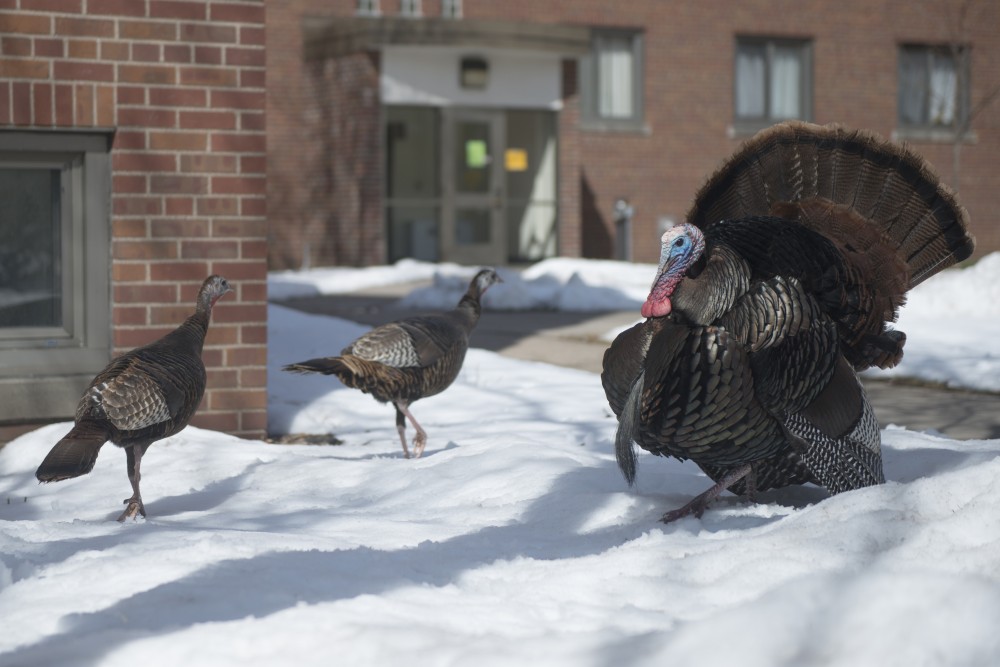As warmer months approach, University of Minnesota experts at the Raptor Center are preparing for migratory birds to return to Minnesota and likely bring the avian flu with them.
The current avian flu outbreak, which has been ongoing since early 2022, is caused by the H5N1 virus. This virus is an influenza A virus that originated and circulates in birds.
The Raptor Center, which is connected to the University’s College of Veterinary Medicine, is one of the largest hospitals for ill and injured raptors such as eagles, hawks, owls, falcons and vultures. Experts are concerned this year’s migration season will cause a spike in avian flu cases.
“I expect that migrating birds will again be carrying high amounts of virus,” said Professor Carol Cardona, who studies poultry health and wellbeing at the University’s College of Veterinary Medicine. “We will see poultry cases again, and some people may find dead birds in their yard.”
Although Cardona expects a spike in cases in the coming weeks, she said she believes overall avian flu cases are decreasing because wild birds that are infected with the virus either develop antibodies against it or die.
In 2022, the Raptor Center had 213 birds who tested positive for the avian flu come under its care, according to Executive Director Victoria Hall.
Raptors are some of the birds most affected by the avian flu, according to Hall.
“Once they get sick, if they make it into a rehab setting, we know the majority will die from it,” Hall said. “We did have one survive [in 2022], a great-horned owl, and go back to the wild.”
The Raptor Center closed to the public last summer for the safety of the birds, according to Hill.
The avian flu can be spread through fomites, or contaminated particles, that humans can carry on their shoes or clothes.
The Raptor Center is now open, but there are heightened sanitation requirements for visitors. Visitors must wear shoe covers and sanitize their hands and any mobility aids that touch the ground must go across a disinfecting mat.
The Raptor Center is working on a project that tests wild birds for antibodies to the avian flu, Hall said. If researchers find wild birds with antibodies, it could indicate the avian flu has a higher survival rate than previously thought.
Avian flu impacts wild turkeys, poultry and egg prices
Avian flu can be transmitted to small mammals and even humans, but these cases are fairly rare, according to Cardona.
The more recent outbreak is primarily being transmitted by wild birds and has low levels of transmission between poultry farms when compared to the 2015 outbreak, according to Amos Ssematimba, a researcher who studies flu transmission.
More than four million poultry birds have been affected by this outbreak of avian flu, compared to about nine million during the 2015 outbreak, Ssematimba said.
Still, this outbreak is a major contributing factor to higher egg prices, he said.
According to Cardona, different species of birds react differently to the virus. While many raptors are prone to severe illness and death, some ducks and geese show no symptoms of illness from the virus.
Wild turkeys, which are abundant on and near campus, seem to be at a low risk for developing serious illness from the avian flu. Coyotes are a bigger threat to wild turkeys than the avian flu, according to Cardona.
There have been avian flu cases in wild turkeys, but the cases seem sporadic and don’t indicate that the wild turkey population is struggling due to the avian flu, Cardona said.
Birds who have the avian flu tend to present neurological symptoms, such as twisted neck syndrome and walking as though intoxicated, Cardona said. He recommends reaching out to avian experts before approaching a bird exhibiting these symptoms.





















